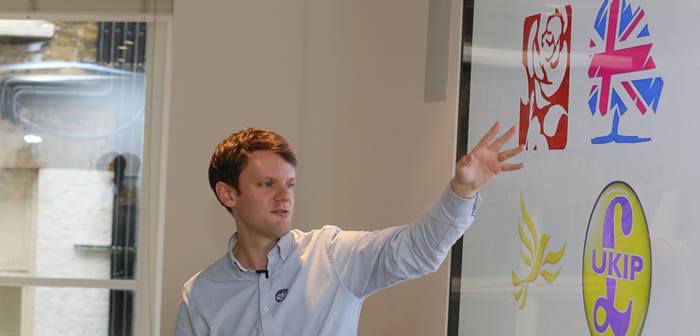To many the 2015 Conservative election win came as a surprise. Opinion polls were wrong. Predictions wide of the mark. It came out of the blue.
Or did it? Today we were lucky enough to hear from Craig Elder of Edmonds Elder. He and his team were responsible for the digital and social strategy for the Conservatives in the 2015 election. What we learned over the course of 30 minutes was that the election result was down to years of careful and targeted work.
This was no fluke, this was the work of consummate professionals who used learnings from their time working agency-side with a range of commercial clients – and took those lessons to create the smartest election campaign in years.
So how did they do it?
First, they looked at who they were targeting and what they needed to do to win. They importantly needed to hold on to 40 seats. But even more importantly they needed to win 40 more to win a majority. This insight transformed the campaign. It no longer became about speaking to the nation, it was about speaking to only the right people. The people who might be interested, or could be swayed – even if they’d voted for other parties at previous elections.
Automatically this narrowed the audience. The campaign became targeted. Digital and data fuelled this targeting. Craig and his team made sure they were always testing and measuring, to ensure that at every stage they were speaking to people who were interested in the message, and that the message was working. Over time, targeting became more and more efficient.
Secondly, it became about the message they were sharing. Once they had the right audience it was making sure all the information the audience saw was engaging and relevant. Economic figures with more zeros than you can count mean nothing to most people. However, a smaller figure that shows how a strong economy has and could continue to benefit your life (for example, how many jobs have been created in your area or how much you’re personally saving on income tax) – that’s effective. It was about sharing a real message. A message about a stronger economy that everyone could see applied to them.
After 18 months preparing, the election loomed. They had the message and they had the audience. The third and final step was making sure the audience saw the message – and not just once. Bespoke and quick turnaround content helped make sure that the message was always topical, on-point and interesting to the audience. They were told the truth – that their vote counted and could be the difference between David Cameron and Ed Miliband being Prime Minister.
The campaign was a secret weapon. Those who didn’t fit the audience profiles did not see the Facebook activity, the calculators, the personalised facts and figures. But it was there all the time, working hard to talk to the people who really could sway the vote.
Craig’s talk was inspirational and I think that we in media can learn from his strategy. It is not always about speaking to everyone. It is about speaking to the right audience and truly engaging with them. Big data really can reap BIG results.




